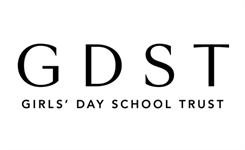Rising income from student fees drove a 9 per cent increase in funds at the Girls’ Day School Trust last year.
GDST, which runs a network of 23 independent schools and two academy schools, describes itself as “the global leader in girls’ education” in its latest accounts.
The charity’s income was £286m in 2021/22, up from £261.3m the previous year.
This growth was driven by rising income from school fees, which increased from £234.9m to £252.8m.
GDST’s financial details for the year to the end of August 2022 were published overnight with Companies House.
Funds from “other fee income” also rose sharply, doubling from £4.8m to £9.9m. The charity said this income “consists largely of transport and educational visit / trip income. Although this income area has increased significantly in our 2021/22 financial year following the restrictions of the previous two Covid-impacted years, income is still below the 2018/19 level by some margin”.
GDST spent £279.8m in 2021/22 but ended the year with a small deficit once investment losses are included.
The average number of staff employed across the year rose slightly, from 4,260 to 4,388, while spending on staff salaries rose by about 4 per cent, from £135.2m to £140m.
This includes half a million pounds on redundancy and termination payments, the accounts show.
GDST had free reserves worth £33m at the end of 2021/22, down from £46.5m. This is still within the charity’s reserves policy and the accounts say the fall was expected after GDST increased capital investment in its schools during the year.
Writing in the introduction to the accounts, Cheryl Giovannoni, chief executive of GDST, admits that the charity faced “difficult” decisions last year after some teachers chose to strike over changes to their pensions scheme.
The accounts reveal that teachers and managers reached an agreement last March which allowed staff to choose between two different pensions schemes. “Both options included a pay rise,” the financial documents say.
